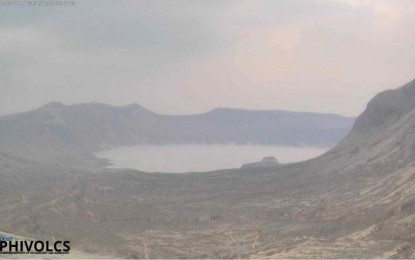
Taal Volcano (File photo from Phivolcs)
MANILA – Four successive steam-driven eruptions have been recorded in the Taal Volcano on Friday, just two days since a weak phreatic eruption was observed at the Main Crater.
These phreatic eruptions occurred at 7:03 to 7:09, 7:17 to 7:18, 7:52 to 7:54, and 7:57 to 8 a.m., the Philippine Institute of Volcanology and Seismology (Phivolcs) said in an advisory.
"We don't expect a bigger eruption at the moment. The recent volcanic eruptions are still volcanic gas driven," Phivolcs Director Teresito Bacolcol told the Philippine News Agency.
He confirmed that even if phreatic eruptions would occur several times in two weeks, for instance, this is not a sign for a bigger eruption as long as the other parameters -- sulfur dioxide (S02) emission, seismicity -- are low.
Earlier, Bacolcol said these phreatic eruptions are likely driven by Taal Volcano's continuous spewing of hot volcanic gases.
The weak eruptions of Friday produced white steam-laden plumes 100 to 300 above the Main Crater.
Meanwhile, Phivolcs said Taal's S02 emission slightly increased on May 9, reaching 2,346 tonnes. The average S02 emission since January is 8,766 tonnes per day, which the Phivolcs said is also high.
Taal Volcano is still under Alert Level 1, which means that it is still in abnormal condition.
Sudden steam-driven or phreatic explosions, volcanic earthquakes, minor ashfall and lethal accumulations or expulsions of volcanic gas can occur and threaten areas within Taal Volcano Island (TVI) or Taal's permanent danger zone.
The public is reminded not to venture inside the TVI as phreatic eruptions may take place without warning.
Local government units are urged to continuously monitor and assess preparedness of their communities and undertake appropriate response measures to mitigate hazards that could be posed by long-term degassing and related phreatic activity.
Aviation authorities are likewise encouraged to advise pilots to avoid flying close to the volcano, as airborne ash and ballistic fragments from sudden explosions and wind-remobilized ash may pose hazards to aircraft, Phivolcs said. (PNA)
